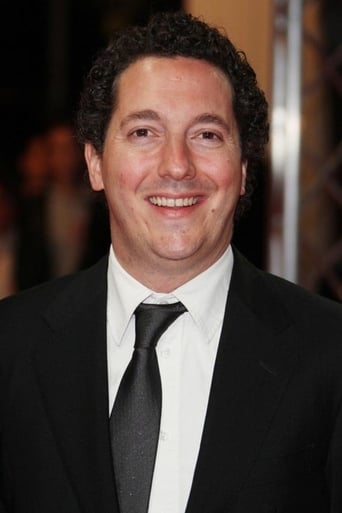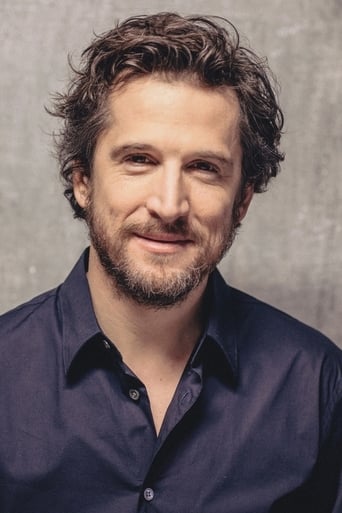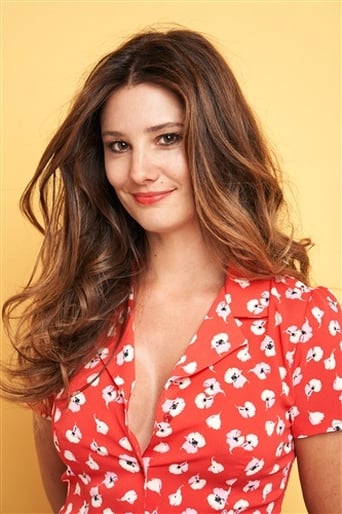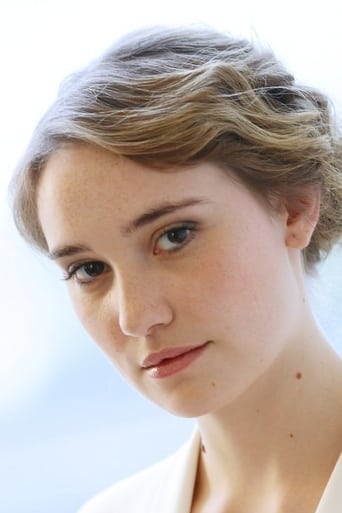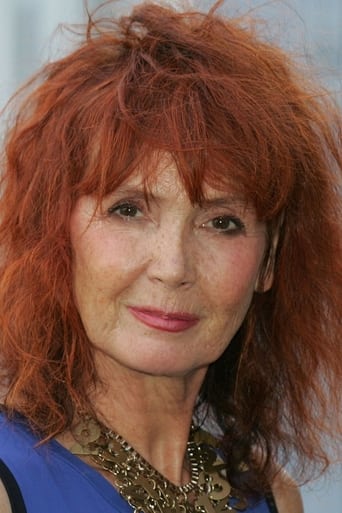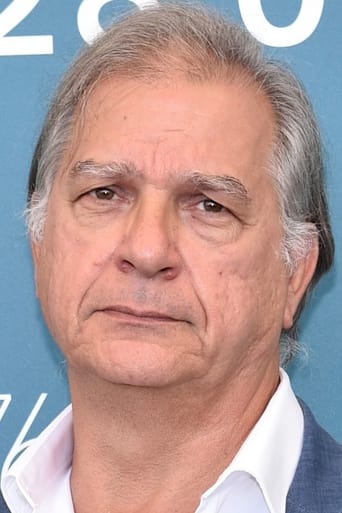SnoReptilePlenty
Memorable, crazy movie
Gutsycurene
Fanciful, disturbing, and wildly original, it announces the arrival of a fresh, bold voice in American cinema.
AnhartLinkin
This story has more twists and turns than a second-rate soap opera.
Deanna
There are moments in this movie where the great movie it could've been peek out... They're fleeting, here, but they're worth savoring, and they happen often enough to make it worth your while.
Ian
(Flash Review)Another film about a stubborn and rude artist. I'm looking at you Pollock, Turner, Klimt and etc… Every time I watch a film about a famous artist, the tone is always about how neurotic and self- centered they are. If that was their personality, sure portray that but I'd also prefer a little more art focus. I think Cezanne et Moi showed the least amount of art of the films I listed. I understand the director's focus was Cezanne and writer Emile Zola and their friendship and hardships as well as watching them wax and wane about life, women, success and struggles. It was interesting to get a clearer portrayal of Cezanne before his art world changing Mont Sainte Victoire impressionistic painting period, how he struggled and lacked significant notoriety. But it would have been a nice compliment to more clearly understand how or what really led him down that revolutionary path. Overall, it was a professionally done film with some stunning scenery shots now and then.
maurice yacowar
There are two films here. One is the lyrical short buried behind the end credits. An establishing shot of Mt St Victoire metamorphoses into the series of Cezanne's increasingly abstracted oil paintings of that mountain. As it recalls Picasso's (and later Lichtenstein's) series of increasingly abstract representations of a bull, it helps to explain Picasso's quote: "Cezanne was the father of us all." This montage of Cezanne's shows — but doesn't enunciate — his revolutionary genius as an original artist. Unfortunately, the titles distract us from the images and most viewers walk out during the sequence anyway. What could have been the core is a throwaway.Then there's the film narrative itself, which entirely omits any explanation of Cezanne's specific importance. We see some of his major works and his exclusion from the establishment but we get no clear sense of what exactly made his art important. Even the film's title veers us away from him to the perspective of his lifelong friend Emile Zola. Such a glaring omission or bias can only be intentional. That is, this film putatively about Cezanne and Zola is not really about their respective arts and achievements at all. Cezanne's artistic breakthrough and Zola's naturalist novels and his unfashionable defence of Alfred Dreyfuss are just alluded to, not explored. They're just part of the setting, like the top hats and cravats — and all the beautiful young nude women.Writer/director Daniele Thompson has rather other fish to fry. To wit, the human failure of the conventionally successful male. She uses these two towering male authorities as a case study in the pathetic neediness and shallowness of the male ego. It's a feminist's anatomy of a classic bromance, with Cezanne as Butch, say, and Zola as The Sundance Kid. There's even a gal-pal to absolve them of any hint of homophilia. The working class Alexandrine passes from Cezanne's mistress/model to Zola's wife. Thompson assumes we know of the importance of the men so she opts not to explore or explain their work. Instead she exercises the familiar conventions/clichés of the artist's dilemma. The Romantic Artist (Cezanne) flouts all artistic and social convention and seems doomed to the purity of poverty and obscurity. In the other corner, the compromised artist bends his passion to the winds of the day, to succeed in the marketplace (Zola). Their disdain is mutual.In an invented anecdote, our heroes first meet in a schoolyard when young Cezanne rushes in to save Zola from bullies. It's love at first fight. That's how their passion will continue. With another lad who shortly disappears, the boys grow into men, at home in the Paris streets and cafes, chafing with ambition and struggling to survive. The friendship survives through — not despite — the two men's passionate arguments and lengthy periods of separation. Zola hates but envies Cezanne's libertinism, eventually surrendering himself to his new young laundress who gives him the children his long-suffering Alexandrine couldn't. Cezanne believes that Zola exploited Cezanne's life and character to crack the bourgeoisie and find fame and fortune. To Cezanne, Zola exploited him the way he himself exploits his models. This is a story of two successful creators who failed at life and humanity. Both are so insecure that their successes can't attenuate their self-loathing (Cezanne) or smugness (Zola). In their last scene together Zola doesn't know Cezanne hears him publicly dismiss the painter as a "genius, but stillborn." Cezanne weeps for days at Zola's death because their feeling for each other never found an acceptable form. Though both men constantly discuss their girlfriends past and present — equally marginal — neither has any true feeling for their supposedly beloved. They neglect them in favour of fresher, shallower mistresses. The painter is enchanted with the colours and shapes of his wife's body while painting her, but shows no interest in the real woman before him. Zola puts a form of this complaint by Alexandrine into the novel that leaves his friend feeling ultimately betrayed. The one woman artist Berthe Morisot appears briefly to flash her bosom and laugh off Cezanne's insulting proposal of a snuggle. As Thompson knows, art has always been the male's preserve, where boys will remain boys however old and successful they may become. They remain fascinated with the malleable outer form of women and too terrified to approach their individuating depths. So they save their passion for each other — carefully camouflaged and suppressed for respectability. Zola's "Cezanne and me" is really about the aloof, needy little Zola himself, hiding his airy superiority behind his literary naturalism.
sergebracker-91603
My time with Cezanne Usually it is sufficient to read the first page of a book, and you know whether you are eligible as his readers. Usually it is enough to see the first half hour of a movie... I was pleased to "My time with Cézanne": the painter and his friend, the writer, Cézanne and Zola. Two artists, who look out of her century far over to us. The one invented in addition with his "J' j'accuse ' the type of the modern intellectual as conscience, the other invented not least Picasso and modern painting, in whose words about so: he was the master who made us all! And the improbable it is, the same little secluded spot of Earth brought them both out, and while at the same time, as friends since childhood. Should such a dexterity of nature be worth not a movie? Their horizon, their departure would be a joint. The revolution of art would listen to their names. But if we are to realize a bliss of common, Grundierende all children, one upset us guarantees: a children salvation soundtrack on the Beatitudes of the children. And before we looked at sullen all the still Leben of pallets, expressed tubes and Salamis bitten at. Ambiance! A Zola Cézanne film, adapted to the basic tone of sentimentality, with much ambiance and countless women's umbrellas. First you have to take away his umbrella the 19th century at the cinema! And the music? It is tempting to see "My time with Cézanne" without sound. But that is difficult, because there is much talk in this movie. Zola spoke much only in his books, Cézanne was a great Schweiger. Has a movie not the obligation, to remain faithful to the temperament of its heroes? The true artist is silent. And now? We have teased us enough and see "My time with Cézanne" all over again from scratch. Maybe the real sovereignty of the critic is to admit that a film he finds rather not well, can be pretty good. Much too full, too colorful surfaces tend sometimes to the depth. As "My time with Cézanne". And somehow both, Guillaume Gallienne as Cézanne and Guilllaume Canet as Zola pretty well in their roles. The restrained Zola, who can directly approach any woman, and desperately waiting for Paul in Paris on the friend. When the province of swashbuckling Cézanne, Zola is introduced by him into the circle of the painter Manet, Degas, Renoir, rejected by the "Salon". And Zola is the Attorney of the rejected, writes a "Salon" report in sequels, must eventually be canceled due to indignation of readers in 1866 in the 'Evénement'. Zola, the author of success from the spirit of art criticism is born. A friendship that survives the selfishness Cézanne, the successful painter, but is a mirage, that he would have to laugh at himself. Finally, Zola his writing about the modern dedicated to his friend, but he is not, that Manet, Manet again. Cézanne no longer bear this name. Bad behavior and Flegelei, shows Guillaume Gallienne, include the self-protection of the artist, and Cézanne leads a Kingdom. For the industrialist father, he is also a loser for the friend. The double conquest of the world has become a departure of a man. And yet, this friendship is strong enough to get through this, there is a generosity from the outset - what is friendship? - and this voltage is also Danièle of Thompson's film. "You're my youth, Paul. I meet in any of my joys, in each of my suffering"friends, the introverted Zola says. Cézanne is no different. It is unpleasant when authors or directors take an artist's life as a mere template for your own inspiration. Thompson accusation could be made. From the outset, an encounter stretches in 1888 by the film Zola and Cézanne. This meeting is his escape as a design point, but it has never taken place. But to know that it is fictional, is called at some point nevertheless admit that it elevates this portrait of a great friendship in the valid - consciously as a contrast to the reality: in 1886, Emile Zola has within its compiling century portraits "the Rougon- Macquart. Natural and social history of a family under the second empire"completes the book of"The work". It is the portrait of a failed artist who takes life, it is a portrait of your friend. Cézanne cool thanks for the fatal post. The rest is silence, for the rest of life. The first idea of success is there in front of him, as well as the ' J'accuse ' before Zola.
richard-1787
You wouldn't miss much if you watched this movie with the sound off. Some of the cinematography, especially of outdoor scenes in Provence, is just astoundingly beautiful. Some is very reminiscent of Le Château de ma mère and the scenes in la garrigue.The acting is all fine. Guillaume Canet is a fine performer and does a good job, but he is not the seriously obese and not handsome man that the real Zola was.The big problem here is the script. It starts with an imaginary meeting between Zola and Cézanne in 1888, two years after Zola permanently alienated the painter with his novel L'Oeuvre (The Great Work of Art). It then moves back and forth between the present and various scenes in the two men's past friendship. There is nothing wrong with that as a format, but the dialogue is way too stereotypical. If these men had been so pleasant, their friendship would not have come to an end. There is no real attempt to explore why Zola turned on the Impressionists, yet that is really the center of the story.So, my recommendation would be to watch this with the sound off.

